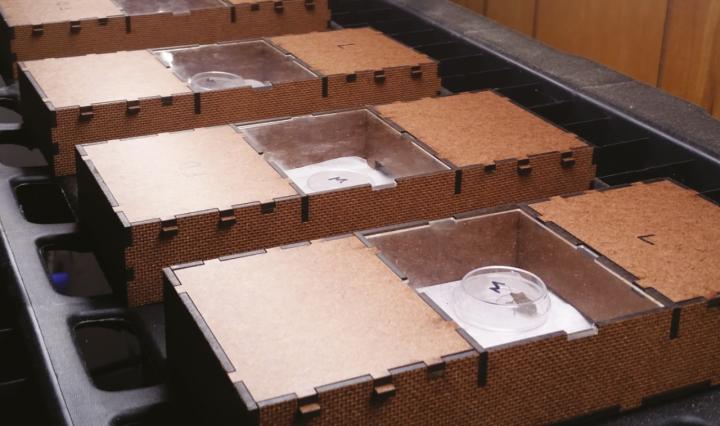
Credit: Benjamin Chambers
Every winter stink bugs infiltrate homes across the United States and two new studies published in the Journal of Economic Entomology by Virginia Tech researchers may shed some light on ways to keep the pests away.
In short, seal holes and gaps larger than 3 to 7 millimeters and remove any long-dead stink bugs, which may further attract other stink bugs.
The first study found that slits less than 3 millimeters wide and holes less than 7 millimeters will keep out the majority of brown marmorated stink bugs, or Halyomorpha halys.
“The way people talk about H. halys, you’d think they could get into just about anything,” said Benjamin Chambers, an instructor at Virginia Tech. “We now know once you’re below a rigid 3-by-7 millimeter opening, you won’t see many getting through.”
For this project Chambers put 30 brown marmorated stink bugs inside different sealed boxes with various size holes or slits and watched how many were able to escape. A single millimeter change would make all the difference.
In another study Chambers found that recently killed stink bugs will deter other stink bugs, but if killed long ago, the opposite will happen and the bugs would aggregate around them.
“I expected an aversion to dead stink bugs left from previous years. I’d have thought their presence would indicate the refuge was not safe,” said Chambers.
“The results suggest that removing dead stink bugs from a space may eliminate a signal for H. halys to settle after entering. Or, alternatively, ‘seeding’ traps with stink bug corpses could improve trap performance, but further testing is needed.”
Chambers research was spurred by a stink bug invasion in his own home. “I knew I wanted to study how building structures and characteristics influenced animal behavior, and vice versa,” said Chambers. “It just so happened when I joined the program that I lived in a house full of brown marmorated stink bugs. They were an obvious choice.”
Co-authors on these papers include: Tom Kuhar, professor of entomology, Tracy Leskey, Annie Pearce and Georg Reichard.
###
About Chambers
Chambers is an instructor in the Department of Engineering Education in the College of Engineering and graduate of Virginia Tech’s BioBuild and Entomology programs. For both of these projects he collaborated with the Department of Entomology in the College of Agriculture and Life Sciences. His research focuses on the effects of building characteristics on home invasion and the overwintering behavior of the brown marmorated stink bug.
Media Contact
Ceci Leonard
[email protected]
540-357-2500
Original Source
https:/




